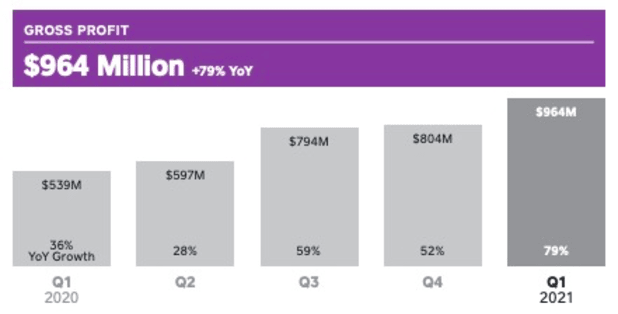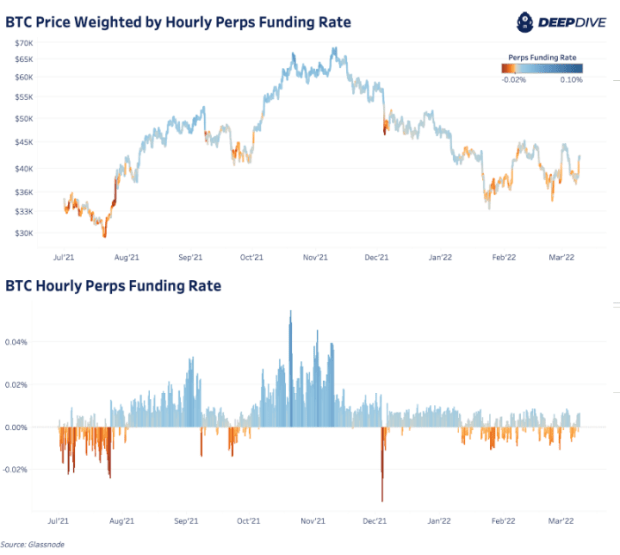Bitcoin Mining And The Case For More Energy
Why bitcoin mining will galvanize the greatest revolution in energy production since the Industrial Revolution.
When we first published this essay in May, we did so pseudonymously for the same reason that many other authors adopt pen names: to let our ideas stand (or fall) on their own merits. In the months prior, Bitcoin’s energy debate had heated from a simmer to a boil, yet we continued to find the mainstream conversation lacking. There was little consideration of energy’s fundamental importance to human progress, and even less appreciation for the cosmic beauty of bitcoin mining that has inspired us so deeply.
Our aim was simple: to outline humanity’s relationship with energy from first principles and describe the role bitcoin mining can play in building a better future — one defined by sound digital money and cheap, abundant energy. This is the future we are working to build at Cathedra Bitcoin. And we invite you to join us.
Much ink has been spilt on the topic of Bitcoin’s energy consumption. Many have condemned Bitcoin’s growing use of energy, and in response, many others have sought to justify it. The war wages on, atop the battlegrounds of Twitter timelines, Medium pages and major news outlets. But much of this discourse fails to fully address the concept of energy itself.
Energy is quite literally the foundation of existence. In the words of Robert Lindsay, “no other concept has so unified our understanding of experience.” But energy is also a very subtle concept, so our intuitions on the topic often lead us astray.
The goal of this essay is not to defend Bitcoin’s social benefit. We take for granted that a sound money free from bureaucratic debasement has value independent of the speculation, money laundering and nefarious activities it is so often accused of enabling.
The goal of this essay is to outline our view of the future of energy, bitcoin mining and how these two currents will converge. We conclude that this convergence will catalyze an energy revolution that has the potential to usher in a period of unprecedented prosperity. But first, we will lay the groundwork with some energy fundamentals.
Energy: The Foundations
“Energy is the only universal currency.” –Vaclav Smil, “Energy And Civilization”
Earlier, we stated that energy is the foundation of existence. This is not hyperbole; at the beginning of time — what some have called “The Big Bang” — our entire universe was a dense ball of energy.
In the billions of years since, the significance of energy has not diminished. Even today, all matter contains energy; this insight lies at the heart of Einstein’s famous equation, E=MC². But energy takes many other forms as well: the movement of your hand (kinetic energy), the calories in the food you eat (chemical energy), the light from the sun (electromagnetic energy), the heat from the kettle (thermal energy)… the list goes on, but the underlying concept is the same. Energy is the capacity to do work, regardless of the type of work involved (“power,” on the other hand, is the rate of energy flow).
But not all energy is created equal.
The first two laws of thermodynamics tell us that while energy is conserved, it flows towards equilibrium. A hot body (high energy) connected to a cold one (low energy) will eventually give off its heat until the two are the same temperature (equilibrium). And in this approach toward equilibrium, order is lost. As waste heat is created, entropy increases.
Entropy tells us how the energy of a system is distributed among its parts. Over meaningful time horizons, the entropy of any system will increase. To reduce entropy within some part of the system, entropy must be increased elsewhere. States of order and complexity are lower entropy than states of disorder. The creation and preservation of structure requires a decrease in entropy locally, resulting in an increase in entropy elsewhere.
Though entropy is often viewed negatively, life itself depends on it. Life compresses energy into low-entropy states and pays for it by emitting energy with much higher entropy elsewhere. You ingest resources from the environment (air, food, water) to preserve your internal order and create structure (amino acids, tissue, etc.), and in doing so, you increase entropy in your immediate surroundings.
When considering energy, there are other factors beyond entropy that are relevant as well — density and efficiency in particular. Some forms of energy are more dense than others. Likewise, extracting energy from some low-entropy sources is more efficient than others (this holds true in physics as well as economics).
This inequality between various forms of energy is all the more pronounced in practice. Heat is considered waste in many industrial processes (entropy in its most literal sense). Other ambient, low-density forms of energy may be abundant on earth, but are quite hard to utilize. Today, it would seem foolish to burn grass for energy on an industrial scale. Meanwhile, humans scour the planet for rare minerals to build expensive batteries in hopes that they might offer us a few hours of densely packed energy when we need it most.
It is not just “energy” we care about, but energetic order. We want our energy in a distilled form. We want energy that is easy to command and transport wherever we need it. And we want energy that can be used for anything.
“It is energetic order that’s scarce, and the order in energy that’s expensive.” –Peter Huber and Mark Mills, “Bottomless Well”
The story of our “energy consumption” is really the story of humanity’s Sisyphean effort to create and preserve order, harnessing ever-greater amounts of energy to support life by reducing entropy locally and shedding more entropy elsewhere.
In this light, the terms “energy production” or “generation” are misleading. The energy is conserved, but its order is not; the energy is distilled so that it can be more functional, more concentrated, and more easily controlled. A watt that can be delivered on demand through a tiny wire is far more valuable than a watt of ambient heat. Power plants do not “create” energy; they merely convert it into a useful form. Thus, our “energy footprint” is determined by our ability to facilitate these conversions, limited only by the laws of physics, current technology and economic realities. And a massive portion of this footprint is used to distill energy into its most fungible form: electricity.
The Age Of The Electron
Electricity is the most distilled form of energy. It is highly dense; electricity allows for a single transmission line to carry enough energy to power a small country. It is also highly versatile; electricity can power cars, household appliances, many industrial processes, and perhaps most notably, the entire apparatus of information technology that’s allowing you to read these words.
In terms of energetic order, electricity is king. For this reason, technology continues to select for electricity as its primary source of energy. As this trend continues, our economy is becoming increasingly dependent on this form of energy (various climate change policies are only accelerating this electrification).
Developed nations take ubiquitous electricity for granted. Meanwhile, intermittent power can be one of the biggest burdens for developing nations to overcome in their quest for economic growth.
But electricity is a particularly tricky commodity to depend on.
Electricity is a distinctly local phenomenon. If there are no transmission wires, it is trapped at the site of generation. This is fundamentally different from the fossil fuels that powered the last roughly 250 years of global industrial growth, which can be extracted around the world, stored cheaply, and transported wherever there is demand.
But we don’t care. Our demand for electricity is fickle. When we plug our phone charger into an outlet, we demand it be met with fresh electrons.
Unfortunately, however, the supply of electricity is constrained. It takes time to build out new power generation projects and complete the requisite regulatory processes. It also takes money, as electrical generation and transmission infrastructure requires substantial capex. So, potential electricity supply is relatively fixed in the short term.
Yet, despite the fickle supply and demand, the electrical grid must be balanced. Grids are effectively massive circuits, so if supply does not match demand, the consequent variations in voltage and frequency can cause blackouts. Phrased differently, unlike every other commodity, electricity must be consumed as it’s produced (though much investment has been made into industrial scale battery storage, this technology has yet to prove viable for long-term storage). Fortunately, at scale, much of the short-term fluctuations in demand cancel each other out. But the balance is still actively managed by grid operators who dispatch different generation resources, storage mechanisms and curtailment programs to achieve this outcome. One of the more common methods is “load following,” with flexible generation sources like natural gas scaling up and down to meet the variable electricity demand (or, even if demand is constant, to balance the intermittent generation of solar and wind resources).
This is all to say that it is expensive and difficult to reliably purify energy into electricity, and civilization as we know it depends on those precious electrons. But this hasn’t always been the case.
The Case For More Energy
Man’s default state is abject poverty. The natural world is not a hospitable place for humans; our environment is neither stable nor safe for us unless we transform it. The livability of the planet for the average human depends on our ability as a species to develop the environment into resources that protect, nourish and sustain us.
For most of history, we have been limited to using human and animal labor to do so. Indeed, humanity’s crowning achievements and the comforts of the modern world — extended life expectancy, resource abundance and material wealth — are enabled in large part by a discovery made in the last roughly 250 years, one which unlocked another source of labor beyond mere humans and animals: machines.
Machines can amplify existing human productivity (the printing press produced a step-function increase in the volume of information that could be copied to paper per unit of time) or enable new capabilities altogether (MRIs and other medical imaging technologies provide views into internal organs that no amount of human labor alone could).
But machines don’t power themselves. The cheaper and more abundant the fuel for our machines, the more machine labor we have at our disposal to improve our living standards. Consider, for example, the technological progress and quality of life gains made in the centuries following the Industrial Revolution — the period in history during which man discovered that fossil fuels could be used to cost-effectively power machines. Today, based on the average American’s daily energy consumption, a single individual has the equivalent of nearly 600 humans working at their behest (and without violating any human rights). For most of human history, each individual’s productivity was limited to what they could achieve with their own two hands.
Today, we have freed ourselves from that particular constraint. But consequently, we are more dependent on machine labor than ever. This reality was laid bare in the power crisis that befell Texas in February 2021, during which winter storms caused power outages that triggered food and water shortages, critical infrastructure failure and dozens of fatalities. A few days without energy to power our machines can be a stark reminder of just how fragile modern civilization is. But we will need yet more energy in the future.
In a way, energy is the meta-problem. The most difficult challenges we face as a species become soluble only by converting greater amounts of energy into more highly-ordered forms. The cost of transportation becomes trivial. Food preservation through refrigeration can be delivered to every country in the world. The cost of desalination and other water purification processes is vastly reduced, allowing us to solve the water crisis and its downstream health effects. Our global capacity for computation is hindered only by access to silicon, a problem which is itself tractable with more energy. And without these watts, we will struggle to find alternative solutions.
“It is by mastering power itself — the capture and release of energy — that societies master everything else.” — Huber and Mills, “Bottomless Well”
Of course, the unfortunate flipside of this coin is the grim reality that less energy production exacerbates existing problems and creates new ones. It means fewer resources to sustain life: less food, fewer economic opportunities and higher costs of living. On a long enough timescale, it leads to civilizational decline and all the human suffering that attends it — an acute manifestation of disorder. From a humanist perspective, less energy is never the solution.
A common objection to this brand of energy maximalism is that efficiency improvements can and should obviate the need for more energy. Why can’t we just do more with less? The short answer is: because we never do. Jevons paradox holds that gains in efficiency with which a resource is used only lead to increased demand for that resource. More efficient automobiles led to more driving, not less gasoline. In the case of energy, more efficient generation technologies serve to increase energy consumption rather than curb it. Energy begets more energy; much of the energy we consume today is in the service of discovering, extracting and developing more energy resources for tomorrow.
All this to say, there is no optimistic version of the future in which humanity does not use significantly more energy than it does today.
To the extent we discover new, cheaper ways to energize machines, human quality of life will improve, as we gain ever more mastery over our physical surroundings. This process need not be limited to the environment on Planet Earth; given access to energy that is sufficiently affordable and abundant, humanity could use machines to transform the environments of other planets to support human life. This is a vision that animates us and one we believe is worthy of vigorous pursuit.
Money And Energy
“Money is energy. Bitcoin is the first crypto monetary energy network, capable of collecting all the world’s liquid energy, storing it over time without power loss, and channeling it across space with negligible impedance.” –Michael Saylor
Money allows one to command resources. If energy is the capacity to do work, then the ability to command resources is itself a form of potential energy. Indeed, money and energy have always been linked.
In his seminal essay, “Shelling Out,” Nick Szabo identifies “unforgeable costliness” as an essential property of various proto-monies throughout history. Throughout the ages, the likelihood of a good being used to facilitate wealth transfers has been in part a function of the difficulty with which one could produce or obtain additional units of said good. That is, to be selected as a money on the free market, a good must be costly to produce in terms of time or energy.
“Wampum” — clam shells — carried value among inland Native Americans in the 17th century largely because one could only collect them near ocean shores, requiring considerable exertion to travel to the coast and back. Rai stones were large, disk-like rocks that were for centuries used as a primitive form of money by the inhabitants of the Yap islands in Micronesia. Weighing as much as four tons, rai stones were not native to the Yap islands; importing additional stones necessitated great expenditure of energy. And of course, the commodity monies of more recent history — gold foremost among them — all entail energy-intensive production processes owing to their lack of abundance in the Earth’s crust.
Luminaries including Henry Ford, Thomas Edison and Buckminster Fuller have at various points championed the idea of a currency literally backed by energy (though we remain skeptical of the wisdom and practicability of such proposals). Even the U.S. dollar — a fiat currency whose marginal cost of production approaches zero — is in some sense “backed” by energy today. For decades, the world’s largest producer of oil has agreed to settle all of its sales in U.S. dollars in exchange for U.S. military protection, an arrangement that has come to be known as the petrodollar system.
In Bitcoin, Satoshi made the relationship between energy and money explicit. Bitcoin’s proof of work is a synthetic recreation of Szabo’s “unforgeable costliness”; new bitcoin are issued to miners, who provably consume energy. To this day, proof of work remains the only way we know how to verify in a digital system that energy has been expended in meatspace.
Recently, Michael Saylor has popularized the notion of money as a technology for transporting energy across time and space. We agree with his assessment of Bitcoin as “the most efficient energy network in the history of the world.” As Saylor put it, “the challenge of humanity is, ‘how do I store and transmit energy across time and space and domain?’”
With its fixed supply and digital nature, Bitcoin does not suffer from the same “transmission losses” that plague the monetary energy networks of old. Storing one’s monetary energy in gold involves significant carrying costs and leakage in the form of transaction costs, should one ever seek to transmit that energy across space. And while the U.S. dollar and other fiat currencies improve on gold’s salability across space, they perform poorly as a vessel for transporting monetary energy across time.
Enter Bitcoin Mining
Bitcoin can be understood as a distributed machine that automates the issuance of scarce monetary units and the settlement of financial transactions. The system achieves these ends by demanding that certain network participants — namely, miners — provably consume electricity, which allows the network to order transactions and assure final settlement in the absence of a trusted third party. Perhaps more profoundly, this proof of work creates a connection between the physical and digital worlds that cannot be falsified. The nonce used to create a valid block is the residue of a physical process which must consume energy.
Like other machines, Bitcoin is a productivity-enhancing technology. In the centuries to come, Satoshi’s invention will save incalculable human time in two ways. First and foremost, Bitcoin offers savers protection against large-scale time theft perpetrated by central bankers and their inflationary monetary regimes. Second, Bitcoin liberates resources that would otherwise be spent in the primitive practice of actively managing the money supply — much in the same way that other technological advancements throughout history have allowed us to discard mundane tasks in favor of more productive pursuits. You will seldom encounter someone scrubbing clothes by hand in a home with a washing machine.
To fully understand its relation to the energy sector, we must first grasp the economics of bitcoin mining. At its most fundamental level, bitcoin mining requires nothing more than specialized hardware, electricity and an internet connection. It can be done anywhere in the world at any time of day. Miners’ revenues are unknown, but their costs are usually fixed. And the primary cost is energy. This incentivizes bitcoin miners to find the cheapest power possible, and they scour the earth to do so. As a result, miners typically use power that would otherwise be wasted — or, as coined by Nic Carter, “nonrival energy.”
Phrased differently, bitcoin mining is a permissionless energy sink. Anyone, anywhere in the world can generate revenue by plugging mining machines into an electricity source. This sink is also highly flexible with respect to both time and space. Bitcoin miners can turn their machines on and off without any obligations to customers and can operate in almost any physical envelope.
For the energy sector, bitcoin mining provides a constant demand for energy and a revenue floor, allowing us to monetize energy that would otherwise go to waste. Energetic order is such a precious resource, it would be a shame to let it go unused.
“Do not waste any energy, make it useful.” — Wilhelm Ostwald, winner of the Nobel Prize for Chemistry in 1909
We already see this taking place in the wild, with bitcoin miners helping to balance the intermittent electricity supply of renewables or capturing natural gas that would otherwise be vented or flared. But even more than just utilizing existing wasted energy resources, bitcoin mining will incentivize new generation far in excess of our current capabilities.
The Future Of Energy And Bitcoin Mining
Bitcoin mining directly incentivizes new and more efficient forms of energy generation by offering a “bounty” to anyone, anywhere, at any time, who finds a cheaper way to produce energy at scale. This direct financial incentive for more efficient generation and the newfound viability of previously uneconomical sources of energy will cause a general decline in the price of energy worldwide.
We may well see bitcoin mining operations bootstrap new human settlements into existence. Whereas in the past, generation was only economically viable in locales that were relatively close to the ultimate site of consumption (i.e., population centers), bitcoin mining allows us to develop power generation infrastructure in remote, energy-rich locations and monetize it via the Bitcoin network. After recovering the initial capital cost, the mining profits can be used to fund additional infrastructure build-out to support residential or commercial human settlements that will benefit from the cheap, abundant energy resources.
Economic incentives will impel bitcoin mining to completely saturate the energy sector in the coming decades. The gradual convergence of these two sectors has already begun, and will continue from both directions. Energy producers will monetize surplus power that would otherwise be sold at low or negative rates to the grid (or wasted altogether) by selling it to the Bitcoin network. And bitcoin miners will vertically integrate, owning their own power generation and infrastructure to improve their margins and thereby their competitiveness. It stands to reason, then, that in the future, the most efficient miners will also be energy producers.
At what point will we reach full saturation? Dhruv Bansal of Unchained Capital submits his theoretical “Nakamoto Conjecture” as a plausible answer to this question. Bansal predicts an equilibrium at which the marginal revenue earned from mining bitcoin equals the marginal revenue earned from selling power to the electrical grid. Mining beyond this threshold would be economically irrational for energy producers, since selling power to the grid would be more lucrative. Below this threshold, there remains an economic incentive for producers to continue mining.
Thus, Bitcoin’s energy consumption as a share of global energy production will continue to increase as market participants arbitrage this difference. Bansal refers to this share as the “Nakamoto Ratio” — the fraction of global energy production that is dedicated to securing the monetary base.

The optimal value for this ratio is open for debate, but Bansal hypothesizes that once we reach this saturation point — when marginal revenue from mining equals marginal revenue from selling power to the grid — the Nakamoto Ratio will stabilize, marking the go-forward share of global energy that is used to secure the money supply.
But we are nowhere near this saturation point today. Bitcoin’s energy consumption could grow by a factor of 100 before representing an appreciable fraction of global energy consumption. And revenues from bitcoin mining continue to far exceed those earned by traditional energy producers. Miners using latest-generation equipment today earn over $0.40 per kilowatt hour (kWh), versus an average household cost of electricity in the U.S. of $0.13 per kWh (this figure includes transmission and distribution charges, so the wholesale revenue earned by power producers is likely considerably lower).
What does this mean for humanity? We foresee a new energy revolution.
The Future Is Nuclear
We believe bitcoin mining will help rekindle the lost dream of nuclear energy, which today remains humanity’s most promising option for cheap, abundant, clean, safe power. This is because bitcoin mining fundamentally changes the economics of nuclear energy.
Nuclear power plants are expensive to build relative to other forms of electricity generation, suffering from high upfront capital costs and long lead-times. As a result, expected payback periods for nuclear projects are measured in decades, meaning returns are highly sensitive to the cost of capital. In developed economies, uncertainty around future demand growth and heightened competition from other generation sources have injected further risk into the proposition of financing nuclear energy. Meanwhile, a global trend toward market liberalization has shifted the burden of financing new nuclear projects from the public sector to the more returns-sensitive private sector. In sum, new nuclear power plants will not be built unless the expected returns justify the risk — a hurdle made more difficult by considerable regulatory- and policy-related obstacles.
Here, too, bitcoin mining offers a path forward. In the future, behind-the-meter bitcoin mining operations will serve as a “captive customer” for new nuclear power projects, providing stable, predictable demand for electricity. This captive demand will shorten payback periods and make underwriting new nuclear projects less risky for potential investors, reducing their cost of capital and leading to more nuclear generation. This in turn will increase both electricity supply and competition among producers, driving down electricity prices to the benefit of consumers.
Nuclear power plants typically function as a baseload source of power, as they are slower to ramp up and down generation than other energy resources. As a flexible load, bitcoin mining operations can increase or decrease power consumption on short notice, providing demand response services. This would allow nuclear energy to absorb a larger share of any grid’s generation portfolio, thereby reducing the need for costly supplementary peaker plants.
Indeed, at sufficient scale, bitcoin mining could “invert” the grid entirely. Today, load-following energy resources vary their supply output in response to changes in demand to balance the grid. However, with bitcoin mining, generation can remain at peak levels, with miners soaking up any excess and temporarily curtailing their power consumption during peak hours.
But perhaps more importantly, bitcoin mining will incentivize new advancements in nuclear reactor technology.
For decades, nuclear fusion has been “30 years” from commercial deployment. Perhaps bitcoin mining will offer the financial incentive to finally unlock another piece of Einstein’s famous equation, serving as a sink for the excess energy while we as a species grow into its power. After all, if we had discovered a technology capable of providing terawatts of power generation 50 years ago, what would we have done with that energy?
Conclusion
Life is order. We fight to survive, to preserve and perpetuate this precious instance of complexity we call humanity. Energy is our primary resource in this undertaking, and entropy is the inevitable byproduct. We transform energy outside of our bodies to sustain order within, and we pay for this by shedding disorder elsewhere. We are soldiers of the second law of thermodynamics, struggling to protect the order of life and create structure within our world, emitting entropy as exhaust as we progress in this pursuit.
Looking back on the course of human history, civilization has advanced as we have mastered these transformations, developing better methods of harnessing more energy. At the dawn of our species, we were condemned to compete in unfriendly nature using only the energy of our own bodies. We then graduated to harnessing agriculture and animal labor to channel more energy and develop the first civilizations. Over time, the trend continued: capturing the natural power of wind for maritime travel and trade; transforming the flow of streams and rivers to refine our food supply; and eventually extracting hydrocarbons to power the machines that ignited the Industrial Revolution. Humanity has ceaselessly pursued more efficient ways to harness and utilize more energy. At a civilizational scale, advances in energy generation have yielded substantial economic growth, freeing us to lift our heads toward the sky and our minds toward the future.
If we hope to advance further as a species, we must continue our quest to harness ever more energy, and to do so ever more efficiently. If we hope to overcome the crises we face today, we will need to develop and implement better energy technologies. And if we hope to someday become an interplanetary civilization, we will require far more energy than we use today.
“It is not too much to expect that our children will enjoy in their homes electrical energy too cheap to meter, will know of great periodic regional famines in the world only as matters of history, will travel effortlessly over the seas and under them and through the air with a minimum of danger and at great speeds, and will experience a lifespan far longer than ours, as disease yields and man comes to understand what causes him to age.” –Lewis Strauss, Chairman of the United States Atomic Energy Commission, 1954
In Bitcoin, we have — for the first time in human history — a technology that directly financially incentivizes the discovery of cheaper ways to harness energy, one which cares not about geographic location, consumer demand or other historical hindrances to energy generation.
Accordingly, we believe the emergence of bitcoin mining will galvanize the greatest revolution in energy production since fossil fuels and the Industrial Revolution. It holds the potential to drive humanity up the Kardashev scale, incentivizing us to master the energy resources of our planet and beyond.
“Money doesn’t just scale in response to society’s energy usage, it causes it.” –Dhruv Bansal, “Bitcoin Astronomy: Part II”
The ensuing advances in energy technology will dramatically improve our ability to cheaply power the machines we use to survive and prosper, extending the reach of our species to worlds beyond our own. They will enrich lives and relieve suffering at an immeasurable scale, a prospect friends of humanity ought to celebrate rather than scorn.
Credit to the individuals whose work has shaped our thinking on the topics of Bitcoin and energy: Alex Epstein, Dhruv Bansal, Mark Mills, Peter Huber, Saifedean Ammous and Vaclav Smil.
Special thanks to Dhruv Bansal in particular, whose help in the editing process and patient teaching has been indispensable.
This is a guest post by AJ Scalia (Hodl’n Caulfield) and Drew Armstrong (Selene Lindstrom). Opinions expressed are entirely their own and do not necessarily reflect those of BTC Inc or Bitcoin Magazine.









